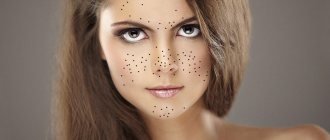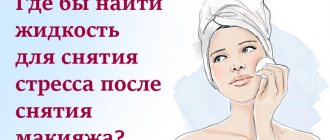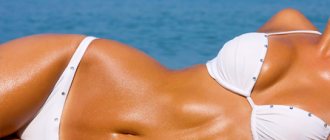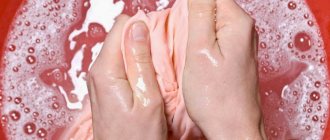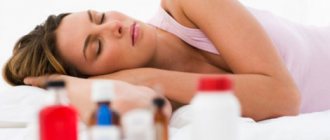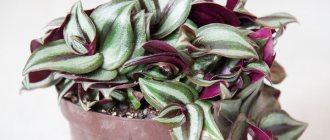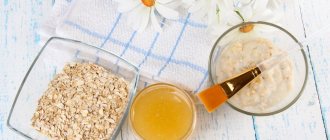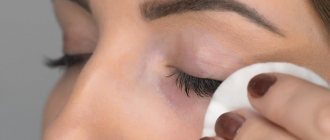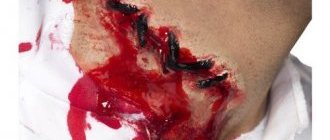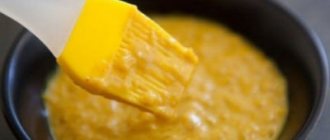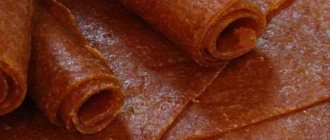An excellent alternative to the sensational black masks from China was the discovery of our citizens. This is a mixture of PVA glue and activated carbon. It gets rid of blackheads just as well. How to make a mask from PVA glue and activated carbon
A mask against blackheads with activated carbon and PVA glue is a godsend for home cosmetology .
It is easy to use and has virtually no side effects.
Myth or reality?
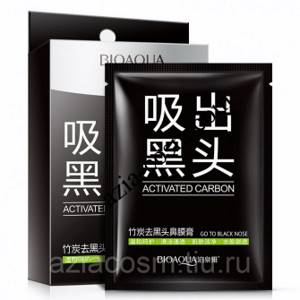
The process of cleansing the face of enlarged pores and blackheads takes quite a long time.
This is a labor-intensive and costly procedure , until recently performed only in cosmetologists’ offices and in expensive salons.
However, with the help of simple means this action will become accessible to everyone, and at home.
The cost of a cleansing mask made in a salon can reach several thousand rubles, while a mask made at home is very inexpensive .
Its effect surpasses even hardware facial cleansing and chemical peeling - because the effect of its use is visible almost immediately, and there is no characteristic redness and burning.
A mask made of activated carbon and PVA glue is recommended for everyone who has skin problems - inflammation, acne, blackheads, and enlarged pores .
Preparation for the procedure
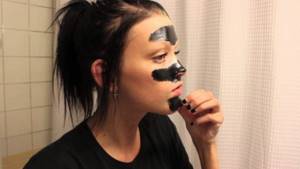
All instruments used should be treated and , this will prevent the occurrence of inflammatory processes.
To achieve the greatest effectiveness, before use, the face should be cleaned and the pores should be opened.
To do this, steam your facial skin and then cleanse it with a toner.
Similar Recipes
There are various recipes for these masks, their components may vary depending on the availability of the necessary components. Some of the funds are interchangeable .
You can learn how to properly use black masks from China from our article.
Replacing glue
So, for example, in the absence of PVA glue, you can use chicken protein.
It has all the necessary pulling properties, and also has a good bactericidal effect .
To prepare this mask, you need to take the white of one chicken egg and add crushed activated carbon to it. Mix the resulting substance until smooth.
Apply a thin layer to the face, leave for a few minutes, then remove the film and rinse with warm running water.
The second product that can be used in the absence of glue is gelatin. It is also a universal base for many masks. Gelatin must be diluted a little with water and then melted in the microwave.
Cool the resulting mixture to room temperature to avoid burns .
To prepare this mask, you first need to prepare a gelatin solution and then add charcoal to it. Along with the removal of the film, the skin will also be cleansed.
Alternative to coal
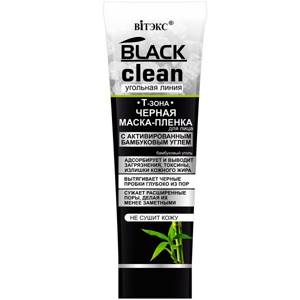
Activated charcoal can also be used along with sea salt, this will not only help get rid of blackheads, but also reduce swelling and redness.
Sea salt has a pronounced anti-inflammatory effect, as well as an antimicrobial effect.
To prepare this mask, you need to take a tablespoon of crushed activated carbon, the same amount of sea salt, and if desired, add a few drops of essential oil .
It is useful to use tea tree oil, or lavender and rosemary oil . Then dilute the resulting composition with boiled water until smooth.
Apply the mask to the face with light movements, leave for 10-15 minutes, if necessary, you can increase the time to half an hour, and then rinse with cool water. The mask can be applied both to the entire face and to spots .
Activated carbon with gelatin
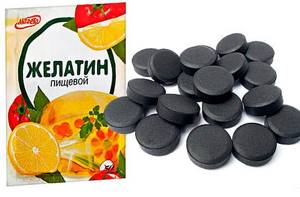
Here everything is somewhat more complicated, but not so scary, since instead of glue, the most common food gelatin is used. Much has already been written about this mask, even more has been said and quite a lot has been taken away.
Here, instead of activated carbon, you can also add any cosmetic clay or a mixture of cosmetic clay and activated carbon. There is also a version of this mask with dry chamomile ground in a coffee grinder into the finest dust, added to the same activated carbon and/or cosmetic clay.
To enhance the effect of the mask, you can lightly steam the skin before applying it. But you shouldn’t do this the first time you use it. Also, this mask, like all film masks, is not recommended for use on damaged, inflamed, burned skin, after chemical peels and other traumatic effects.
The most important thing in the current beauty realities: do not apply all these masks to your eyebrows, otherwise there is a risk of being left completely without eyebrows or seriously spoiling their architecture.
If the thought of wheat germ, for which the advertised marketing mask is famous, haunts you, add a couple of drops of wheat germ oil or any other, not very fatty oil to your recipe. Grapeseed oil, for example, sounds just as cool, doesn't it? However, apricot kernel oil is also quite suitable.
Contraindications and frequency of use
The main contraindication is intolerance to any components. To avoid allergic reactions, it is necessary to conduct a skin sensitivity test before using the mask.
To do this, apply a small amount of the component to the crook of your elbow and wait 15 minutes, then rinse with water.
If redness or a strong burning sensation appears, you should postpone using this mask.
Masks made from activated carbon and PVA glue, as well as other components, should be used no more than twice a week .
How to use PVA glue against blackheads
The features of this product also determine the specifics of its use as a cosmetic product. It can be used in its pure form, or can be included in other recipes. In addition, before using such products, you will need to prepare your facial skin - this increases the likelihood of achieving the desired effect.
Attention! Before using PVA glue against blackheads, check how your skin reacts to it. To do this, apply a small amount of glue to the area of skin behind the ear and leave until completely dry, then remove. If a negative reaction does not appear within 12 hours, you can use PVA glue on your face.
Facial skin preparation
To make PVA glue more effective, before using it, you must thoroughly clean your face according to the following procedure:
- Wash thoroughly to remove excess skin impurities.
- Use a toner that removes excess sebum.
- Steam your face. This procedure expands the pores, making comedones come out much easier. For steaming purposes, you can hold your face over a bowl of hot water for 10–15 minutes so that the steam expands the pores. If this method is uncomfortable for you, just take a clean towel, soak it in hot water and leave it on your face for the same amount of time.
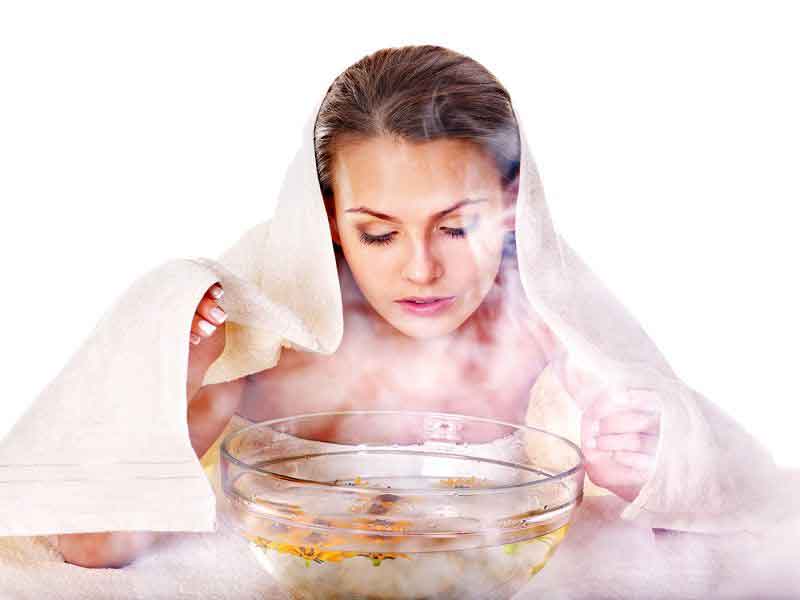
Before using PVA, your face must be steamed
The application of PVA should take place immediately after steaming, otherwise the pores will narrow again after some time. Therefore, prepare everything you need in advance.
How to use PVA glue against blackheads in its pure form
Shake the bottle of glue well and apply it to problem areas. It is better to use a cotton pad or cotton swab for this rather than your own fingers. After this, you just have to wait until the glue dries. Try to relax your facial muscles during the procedure, which will take about ten minutes. When the glue turns into a film and there are no wet places left on the treated area, you can carefully remove the adhesive mask. It is recommended to do this in front of a mirror to ensure that all glue residue is removed from the skin.
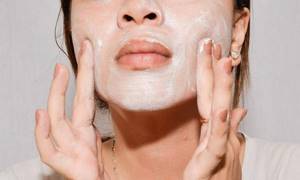
Simply apply PVA glue to problem areas
To complete the procedure, you will need to treat the skin with any suitable antiseptic. For example, chlorhexidine is a good choice, as it will prevent bacteria from entering open pores and prevent the development of the inflammatory process. After this, all you have to do is wash your face with cool water and apply your usual moisturizer, providing the skin with the necessary nutrition.
Attention: although PVA glue is not toxic, it is not recommended to resort to this procedure more than 1-2 times a month.
Mask based on PVA glue and activated carbon
The ability of the glue to form an elastic film when dry makes it possible to use it as a basis for preparing film masks at home. The most popular recipe involves a combination of PVA glue and activated carbon.
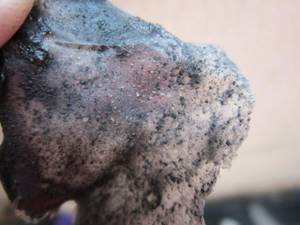
Activated carbon will enhance the effect of the mask against blackheads
To prepare the mask, you will need to take three tablets of activated carbon and crush them to a powder so that there are no too large particles. Then shake the glue and add enough of it to the charcoal powder to make the mixture medium thick. The finished mixture should be applied to problem areas and wait until dry. After this, remove the resulting black film and rinse your face with cold water. This mask is used no more than once a week, but to complete the course of complete cleansing you need to do at least 5 procedures.
Recommendations
Rules for using a mask:
- The mixture can be prepared for several uses; the remainder should be stored in the refrigerator.
- Be sure to check the expiration date of the ingredients before preparing the composition.
- Apply the mask only at room temperature .
- If you have dry and flaky skin, use masks with caution.
You can learn how to make a face mask from activated carbon and PVA glue from the video:
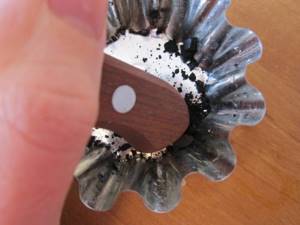
Activated carbon mask for blackheads
YOU CAN ORDER ON THE OFFICIAL STORE WEBSITE
Activated carbon and PVA glue
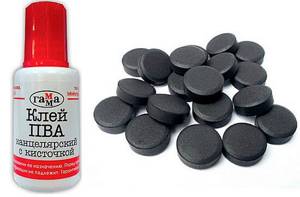
According to the know-it-all Wikipedia, PVA glue is a solution of polyvinyl acetate in water, with a plasticizer and special additives. It has virtually no smell and is easy to use - who would have thought! - for gluing materials to each other.
To prepare masks, it is recommended to use stationery non-waterproof PVA (PVA-K) or glue for children's crafts, which can always be relatively easily washed off with ordinary water if something happens. Hardening on the skin, the glue forms the very film that promises to pull our blackheads out of their homes.
In order for the mask to acquire the coveted black color and corresponding functions, crushed activated carbon and/or black cosmetic clay are added to the glue. You can use any clay, but black, of course, is much more suitable in color.
If using office glue for facial skin scares you a little, you can try replacing office PVA with BF medical glue.
It is still better to see the further process a couple of times than to read it a hundred and five hundred times on the Internet.

